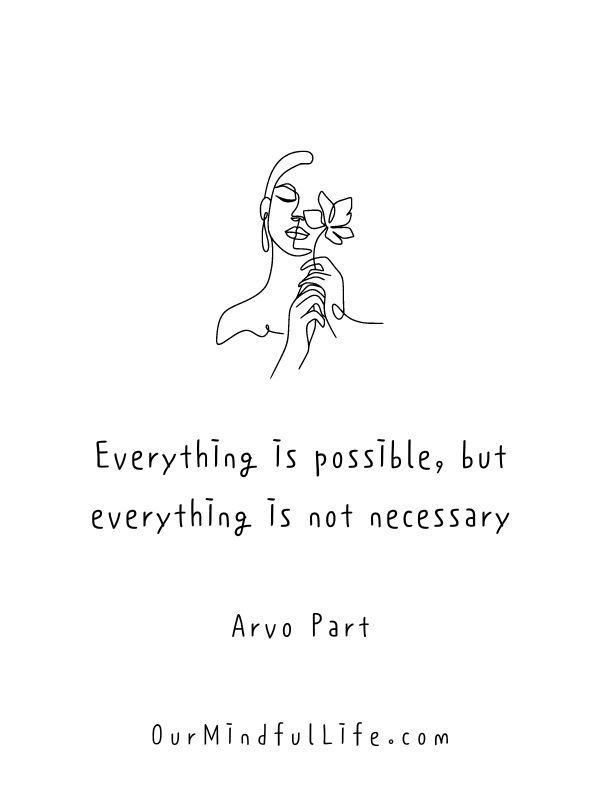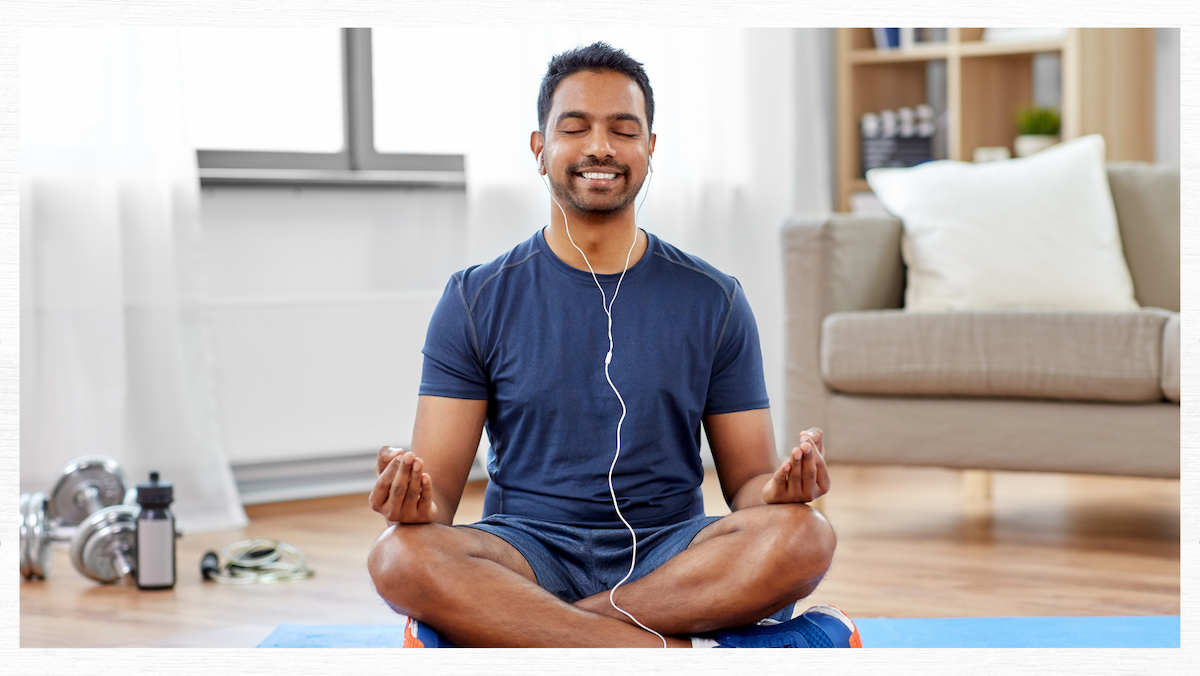Embrace Minimalism: A 30-Day Plan For A Simpler Life

Table of Contents
Week 1: Assessing and Decluttering Your Space
The first week focuses on tackling the physical clutter that often weighs us down. This is the foundation of embracing minimalism and creating a more serene environment.
Identifying Your Clutter Hotspots:
Before diving in, identify the areas in your home where clutter tends to accumulate. This could be overflowing closets, drawers stuffed with unused items, or countertops covered in miscellaneous objects. Taking "before" photos is a great way to visually track your progress and celebrate your achievements throughout the process. Remember the "one in, one out" rule: for every new item you bring into your home, one similar item must be removed. This simple rule prevents future accumulation and keeps your minimalist lifestyle on track.
The 20/20 Rule:
A helpful guideline for decluttering is the 20/20 rule. Ask yourself: Have I used this item in the last 20 months? Would it cost me more than $20 to replace it? If the answer is no to either question, it's likely time to let it go. Focus on discarding items that don't bring you joy, serve a practical purpose, or align with your values. Don't forget to donate usable items to charity, sell items of value, or recycle what you can. This mindful approach to decluttering is key to embracing minimalism effectively.
Digital Minimalism:
Minimalism isn't just about physical possessions; it extends to our digital lives as well. Start by unsubscribing from unwanted emails and push notifications. These constant interruptions contribute to stress and overwhelm. Delete unused apps and files from your computer and phone, freeing up space and mental energy. Finally, consider limiting your social media usage. Set time limits and be mindful of how much time you're spending scrolling.
Week 2: Conscious Consumption and Shopping Habits
Once you've decluttered your space, it's time to focus on preventing future clutter. This week is about cultivating mindful consumption habits.
Mindful Spending:
To effectively manage your spending, track your expenses for a week. This will highlight areas where you might be overspending. Create a realistic budget and stick to it, prioritizing needs over wants. Remember, experiences often bring more lasting happiness than material possessions. Shifting your focus from acquiring things to creating meaningful memories is a core principle of embracing a minimalist lifestyle.
The Power of "Need vs. Want":
Before making any purchase, ask yourself: Do I need this, or do I just want it? This simple distinction can save you money and prevent unnecessary clutter. For non-essential items, implement a 24-hour waiting period. This allows time for reflection and helps prevent impulsive buys. Consider alternatives like borrowing, renting, or bartering before purchasing something new. This approach to conscious consumption aligns perfectly with the principles of minimalism.
Sustainable Minimalism:
Integrating sustainability into your minimalist lifestyle is a powerful way to reduce your environmental impact. Choose sustainable and ethically sourced products whenever possible. Repair items instead of immediately replacing them – a small repair can extend the life of an item significantly. Reducing your waste and choosing durable, long-lasting items are crucial for both minimalist living and environmental responsibility.
Week 3: Simplifying Your Schedule and Routines
This week focuses on decluttering your time and energy. A simplified schedule leads to a more peaceful and productive life.
Time Audit and Prioritization:
Track your time for a week to pinpoint activities that drain your energy without adding much value. Once you understand where your time goes, prioritize tasks based on importance and urgency. Learn to politely decline commitments that don't align with your goals or deplete your energy. This mindful approach to time management is a key element of a minimalist lifestyle.
Mindful Productivity:
Practice single-tasking and focus on one task at a time, rather than trying to multitask. Utilize time management techniques like the Pomodoro Technique (working in focused bursts with short breaks) to enhance productivity and concentration. Schedule dedicated time for relaxation and self-care – these activities are crucial for well-being and shouldn't be neglected.
Digital Detox:
Schedule regular breaks from technology. Designate specific areas in your home as "screen-free" zones, encouraging more meaningful interactions and relaxation. Avoid using social media before bed; this improves sleep quality and reduces stress. A digital detox, even for short periods, can have a profoundly positive impact on your mental well-being.
Week 4: Maintaining Your Minimalist Lifestyle
The final week focuses on making your minimalist lifestyle sustainable and long-lasting.
Review and Reflection:
Reflect on your progress over the past 30 days. Identify any challenges you encountered and how you overcame them. Celebrate your successes and acknowledge how far you've come. This reflection is crucial for identifying areas for continued improvement and reinforcing positive habits.
Creating Sustainable Habits:
Continue practicing mindful spending and conscious consumption. Maintain your decluttered space by consistently applying the "one in, one out" rule. Regularly review your schedule and routines to ensure they align with your goals and values. Consistency is key to maintaining a minimalist lifestyle.
The Ongoing Journey of Minimalism:
Remember, minimalism is a journey, not a destination. It's an ongoing process of refinement and adaptation. Be flexible, adjust your practices as needed, and embrace the freedom and simplicity that a minimalist lifestyle provides. It's about living intentionally, not deprivation.
Conclusion:
Embracing minimalism is a transformative journey that leads to a simpler, more intentional life. By following this 30-day plan, you've learned to declutter your physical and digital spaces, cultivate mindful consumption habits, and simplify your schedule. Remember, minimalist living is about intentionality, not deprivation. It's about focusing on what truly matters and creating a life filled with purpose and joy. Continue to practice the principles of minimalism – from mindful spending to conscious consumption – and enjoy the benefits of a less cluttered and more fulfilling life. Start your own minimalist journey today! Embrace minimalism and discover the transformative power of a simpler life.

Featured Posts
-
 Living The Good Life Practical Tips For Daily Well Being
May 31, 2025
Living The Good Life Practical Tips For Daily Well Being
May 31, 2025 -
 Who Will The Browns Draft At No 2 Mel Kiper Jr S Prediction
May 31, 2025
Who Will The Browns Draft At No 2 Mel Kiper Jr S Prediction
May 31, 2025 -
 Yous Back On Netflix A Review Of Season 4
May 31, 2025
Yous Back On Netflix A Review Of Season 4
May 31, 2025 -
 Tain Offers Temporary Home To Rogart Veterinary Practice After Fire
May 31, 2025
Tain Offers Temporary Home To Rogart Veterinary Practice After Fire
May 31, 2025 -
 1 9 Milliarden Us Dollar Deal Sanofi Erweitert Portfolio An Autoimmuntherapien
May 31, 2025
1 9 Milliarden Us Dollar Deal Sanofi Erweitert Portfolio An Autoimmuntherapien
May 31, 2025
